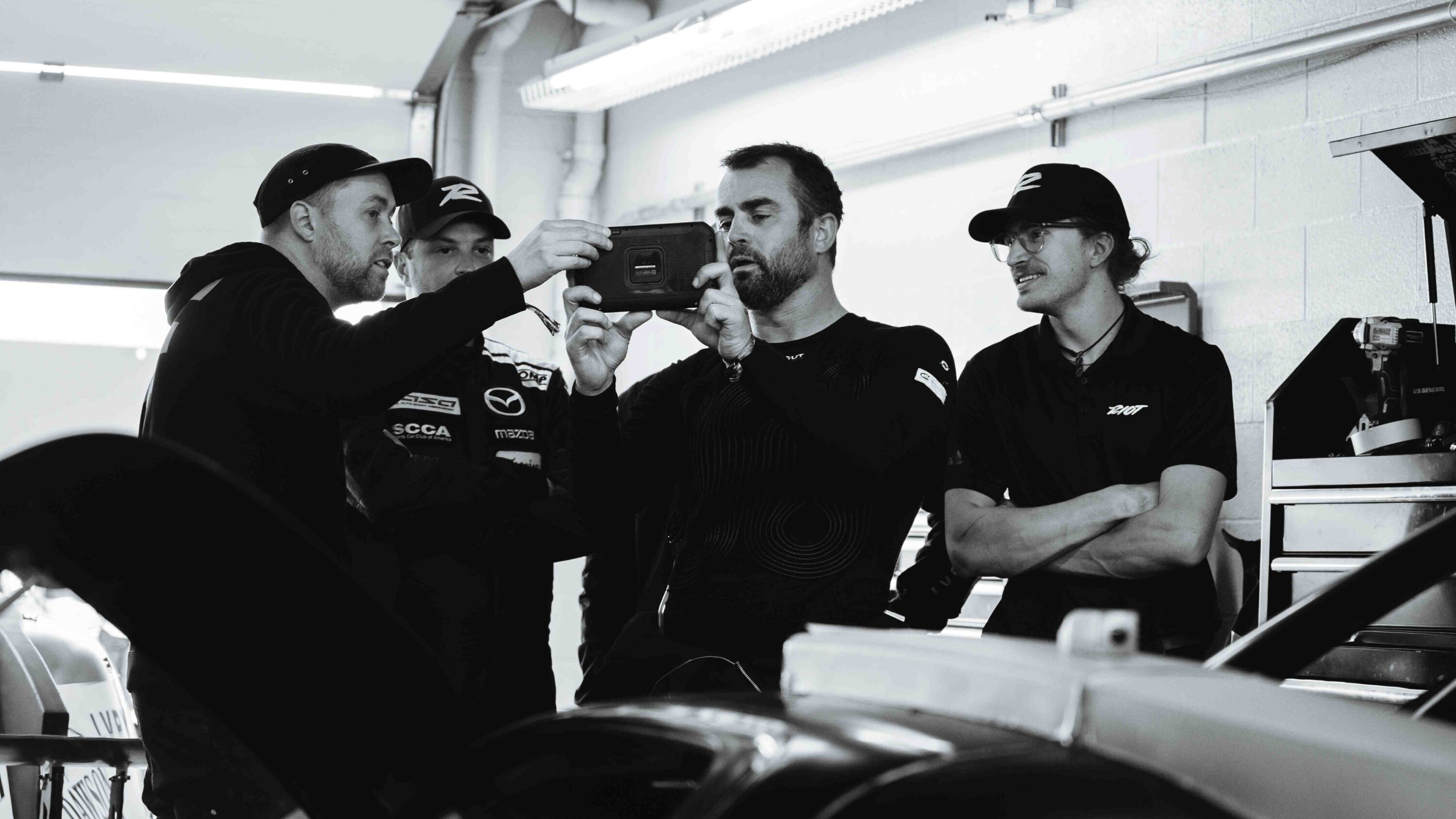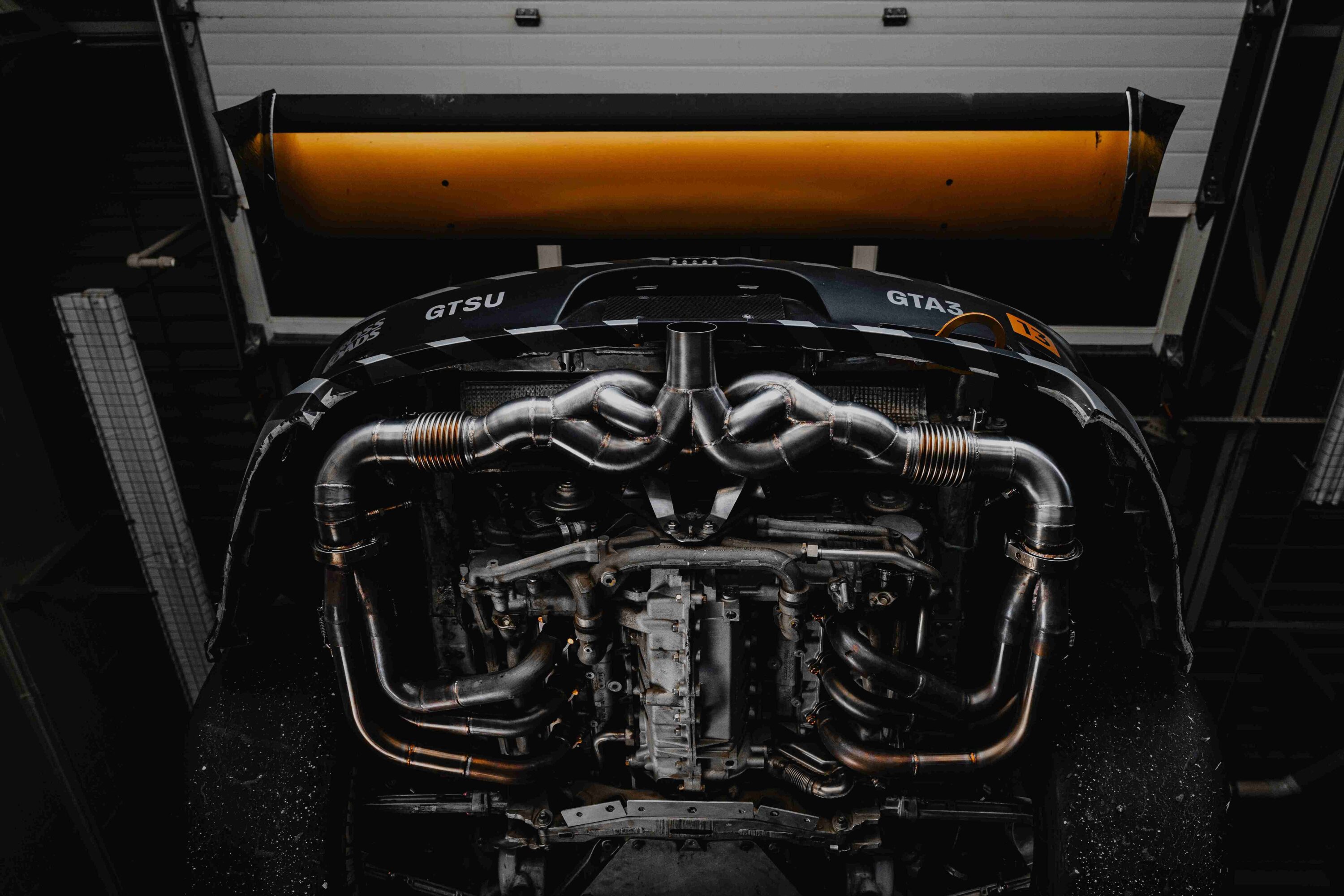Avoid the scramble and stress of waiting for the last minute.
This article can be read on it’s own, but feel free to check out the links to the other parts of the series!
Learning a New Race Track Series:
- Introduction & Method Overview
- Studying the Track
- Getting Tech & Registration Squared-Away (that’s this one!)
- The Race Weekend

If you’re learning a new track, you’re likely traveling and if you’re traveling, you’re probably going to be driving with a different club than you’re used to.
Even if you’re driving with the same club (for me, it’s NASA), the club may be regionally-organized — and this means things will most certainly be different from your “home” region.
So don’t take the risk of towing hours and hours to arrive at the track, amped-up and ready to drive… only to get turned-away.
The Two Most-Common Reasons to Get Turned-Away from Driving
- Tech Inspection Issues: Your car doesn’t pass tech inspection — for a good reason or due to a misunderstanding… or you can’t get inspected on-site.
- Event is Full: You registered too late and the event is full or you registered in the wrong run group
I’ve seen both happen more frequently than you might think, and I’ve nearly had the Tech Inspection issue happen to me, personally.
#1 — Avoiding Tech Inspection Issues
There are a few simple things you can do to mitigate this risk — just make sure you start early!
Of our six drivers, four of us were able to get our cars inspected early by one of the local NASA inspectors. This allowed us to coordinate a time that was convenient for him and even resolve a few issues that could’ve denied two drivers the ability to race!
There are three general things to consider, here:
- Do your pre-season maintenance early
- Get your inspection done locally
- Get your inspection done early
Do Your Pre-Season Maintenance Early
For me, this meant that December and the first week or so of January was dedicated to making a checklist of “to-do” items, ordering parts, and chipping away at things a few days at a time.
I found a few unexpected issues — all of which were easily resolved, but did require that I place a few orders to everywhere from Amazon to Mazda Motorsports.
Had I waited, I would’ve found myself with an unexpectedly-sketchy sway bar end-link, not been able to figure out a steering wheel hub extension I liked, and not resolved poor clutch-pedal play (it was a master cylinder that was just barely starting to leak).
As we all know… the most likely time to strip a fastener, find a broken part, or run out of Castrol SRF brake fluid is… the weekend before the race (if we’re lucky!).
Have your shop or local regional inspector certify your car
Pretty simple, right? Having this deadline will get you into the garage and working on your car, making sure it will pass, and it saves you from the biggest risk in doing a travel race.
If you can, just get it done early and at a shop that knows you and your car. When you and your car are unfamiliar to that particular club, you may attract additional scrutiny — deserved or not — which opens you up to an inspector looking extra-closely at something he or she isn’t as familiar with and calling compliance into question.
Example: My first Porsche Club of America inspection.
It was a home-track event, but PCA flies-in their own National staff to run the race, certify cars, and approve new drivers.
The scrutineer was going over my Porsche 944 Spec race car with a fine-toothed comb and called my seat-back brace into question.
“The brace plate should be bigger.” he said
“Oh? The rulebook doesn’t specify dimensions.” I replied
“Yeah… that’s true, but you can buy much bigger ones that spread the load across the seat better”
“OK — but does this meet the ruleset?”
“Yes… but still. I’d recommend you upgrade this.”
“Thanks for the advice — I’ll take a look at options for next season.”
So — no harm done, but there were a few similar conversations that really went to the inspector’s preference in how to comply with the rules. Had I made a stink about this particular point or allowed myself to get entangled in a game of opinions, I very well could’ve gotten denied my chance to race and instead had to settle for running DE for another weekend.
If you can show up to registration with a stamped logbook and inspection sticker on your car… you’ll get the express treatment — especially if it’s the first or second event of the year and the club is already rushed with the chaos of the early season, plus all of those other drivers who are asking them how to get their cars inspected.
Get Your Inspection Done as Early as Possible and Make it Easy for the Inspector
I reached out to coordinate our inspection date early this year and was able to coordinate a Saturday where the inspector was going to be at our local race track anyways. That worked great for everyone because a few cars were always stored at the track and those of us (like me) who needed to tow a car out there could plan accordingly.
We worked around his timetable — he was doing us a favor, after-all — and let him set the place, date, and time. This made it low-pressure for him and didn’t set anyone up to be annoyed or rushed — the two drivers who couldn’t make it just didn’t come and will set up their own individual arrangements.
Furthermore, by scheduling it over a month ahead of the event, the few things that didn’t pass inspection on a couple of cars were flagged and remedied with plenty of time to get logbooks signed.
Those little things were an expired window net (easy to forget about) and a fire system that didn’t have the proper certification sticker on it… and one other fire system that needed to be re-certified.
All three of those issues would be grounds for denial into the race and would’ve forced the drivers to either paying a premium for some shop on-track to fix the issues or be subjugated to the Time Trial or HPDE groups — assuming there was room!
#2 — Registering Early
A few of us registered as early as November of 2022, but everyone was signed-up and confirmed about 60 days prior to the event.
Doing this saved us from a few first-event-of-the-season issues:
- Expired Membership
- Expired Race License
- Expired Medical Clearance
- Planning for and adding a Practice Day
- Making sure the budget worked (oh yeah, that money thing)
Expired Licenses and Certs
The first two are easy to fix with NASA — everyone is online and instantaneous.
The Medical Clearance, however, can be an easy miss — especially if you require any sort of supplemental clearance from a specialist due to a medical condition. This is one area that is a hard “no” if it’s not 100% above-board and, in my experience as a drier who does require that supplemental clearance, you want that paperwork done early… just in case the Chief Medial Officer is new that year. But that’s a story for another time.
Adding a Practice Day
This particular NASA SoCal event doesn’t offer a Friday practice… but the track itself is holding an Open Track Day!
Not knowing how busy it usually is, how many cars would be allowed, and knowing our track-time with NASA would be limited to one practice session per day… we jumped on this as soon as they opened registration up.
Having never driven this track before, I’m much happier knowing that I’ll be able to “find the track” without the pressure having to go fast at the same time!
Making Sure the Budget Works
Lastly, committing actual dollars to registrations, renewals, lodging, and all the rest made me have to look at my race budget for the year and take the trade-offs into consideration!
I’m going to have to manage tire expenses, schedule my maintenance, and hold myself to a certain number of track weekends in 2023. Having put real numbers against my budget, I’m able to confidently say that I can afford this event by saying “no” to a few practice-type weekends later this year, as well as not doing any other travel races this year.
Worth it? I sure think so! Especially since I now know that, barring mechanical catastrophes or driver-induced issues, I can run the races that I want to this year — no stress!
I think this is an underrated thing to do — it can be tough to hold ourselves to a budget in general, but add on the fact that racing is an expensive and alluring sport… and it can get away from you. Don’t let yourself get pressured into saying “yes” to that one more weekend, that one additional go-fast part, or taking unnecessary risks without considering the overall cost. Just make sure it’s what you really want to spend your money on.
Wrapping Up
At this point in the process, it’s just up to the nut behind the wheel (that would be me) to keep watching track video and enjoying the feeling that my car is 100% ready to go! It’s freed up some mental bandwidth that has even led me to clean-out the garage, get a few more track bins to organize my junk (er… gear), and get those honey-dos done for my better half.
I’ve found this stuff to be easy to overlook as I’ve gotten further into racing — it’s not new anymore and I don’t have to think about it very much, but on occasion this has led me to miss a few details that have caused some last-minute scrambles getting ready for Race One of the season.






